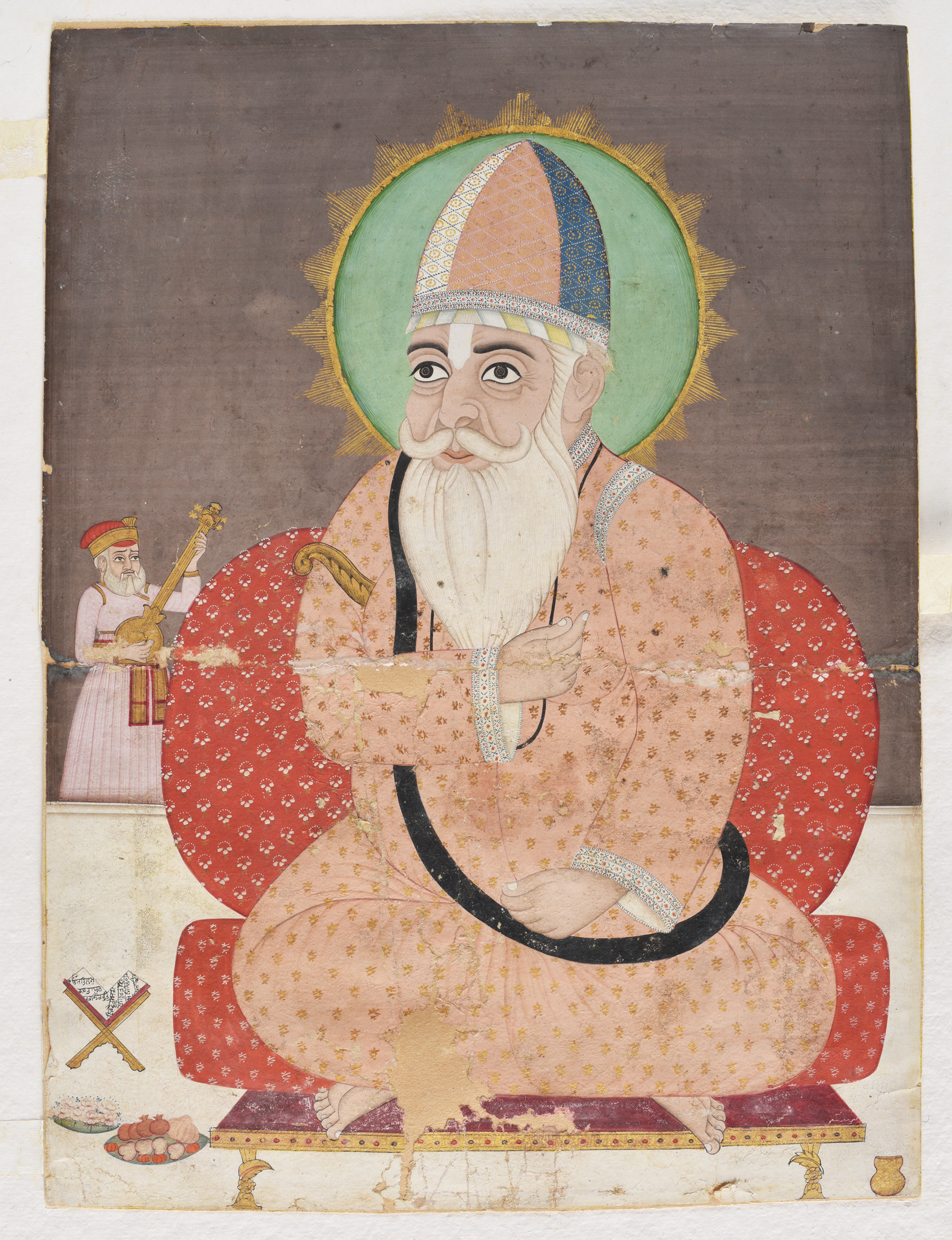Discover, Learn, immerse, Connect
Guru Nanak
This beautiful painting of Guru Nanak is originally from Hyderabad. It dates back to 1730-40 CE. Its main material is paper. One can locate it in the Miniature Painting Gallery at the National Museum, New Delhi.
At the time of Guru Nanak, Punjab was a larger geographical unit than its present-day confines. Nankana Sahib (in present-day Pakistan) is the birthplace of Guru Nanak where he was born to Mehta Kalu and Mata Tripta. The Guru preached a religion that revered 'rabb,' the omnipresent God. Nanak opposed the absolute renunciation encouraged by contemporaneous religions. He also renounced the need of a middleman such as a priest to seek blessings of God. Instead, he encouraged 'Nam Japna' i.e. in order to feel the presence of God one must indulge in meditation and chanting 'Waheguru' which represents the formless Being. He also urged people to lead a spiritual life by serving others (seva) especially through Langar (providing food to the community). Interestingly, Guru Nanak did not support monasticism and asked people to lead the life of an honest householder. His teachings were immortalized in the form of 974 hymns which together formed the 'Guru Granth Sahib,' the holy text of Sikhism. Guru Nanak travelled across South Asia and the Middle East to spread his teachings.
In this portrait, he is depicted as seated on a chowki with a red pillow as a rest which has an intricate beige colour design on it. His right arm is positioned on his chest and left arm is shown resting on his lap. He has a golden and pastel green halo behind his head. On the left side behind Guru Nanak, stands a man playing a musical instrument who is possibly either Bala or Mardana; one of his disciples. In the front left corner, eatables in trays and scriptures on a stand can be seen.
Unlike most other paintings of Guru Nanak, this work of art portrays Guru Nanak in a typical Deccani conical cap and attire.
Guru Nanak Dev Ji, the founder and first Guru of Sikhism, was born in the year 1469 in Talwandi village of the Punjab province in the Indian subcontinent. The village, now known as Nankana Sahib is situated near the city of Lahore in present-day Pakistan. Sikhs over the world celebrate the auspicious occasion of Guru Nanak Dev Ji’s birth on the Pooranmashi (full moon) day in the Lunar month of Katak (October-November) which falls on a different date every year. Blessed with a deeply contemplative mind and rational thinking, young Nanak would often astound his elders and teachers with the sublimity of his knowledge, particularly on divine matters. Growing up, he refused to partake in traditional religious rituals and often spoke out against several prevalent societal practices such as the caste system, idolatry and the worship of demi-gods. By the age of 16, Guru Nanak had mastered multiple existing religious texts and languages (Sanskrit, Persian, Hindi) and was writing what many believed was divinely inspired compositions. It is said that Guru Nanak heard God's call to dedicate himself completely to the service of humanity. Stating that he had been taken to the God's court and given a divine mission, Guru Nanak then began the next stage of his life, to preach his unique doctrine (Sikhi) to the entire world. For the next 30 years, accompanied by Bhai Mardana, Guru Nanak undertook four major spiritual journeys, running across India, South Asia, Tibet and Arabia, covering about 30,000 kilometres.
 Government of India
Government of India



